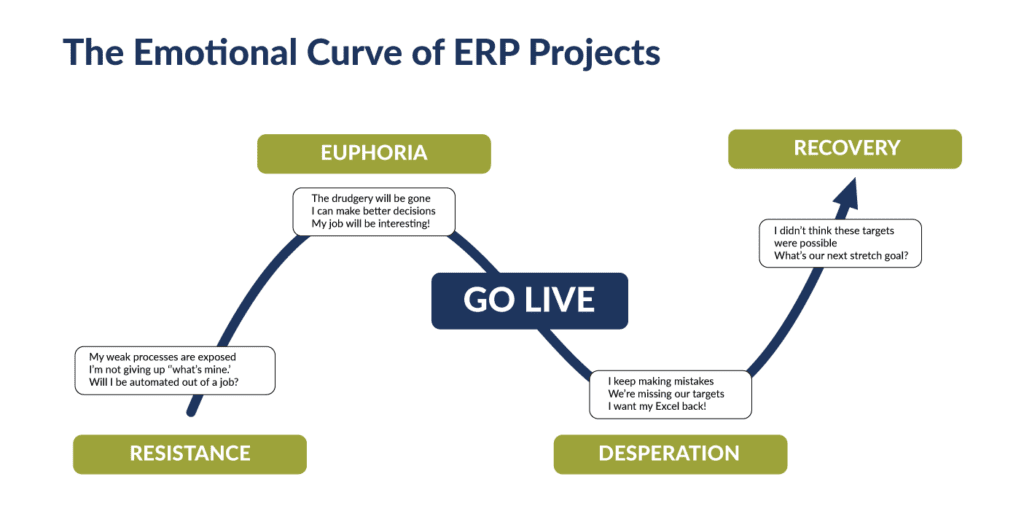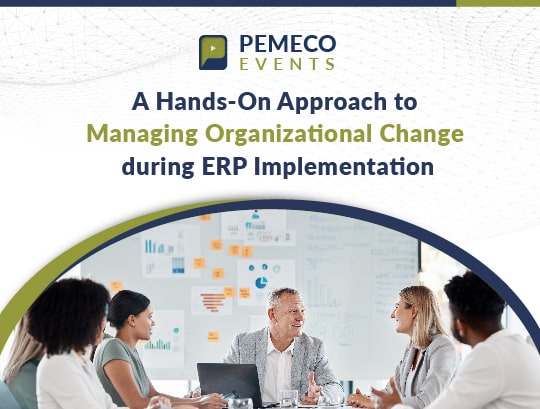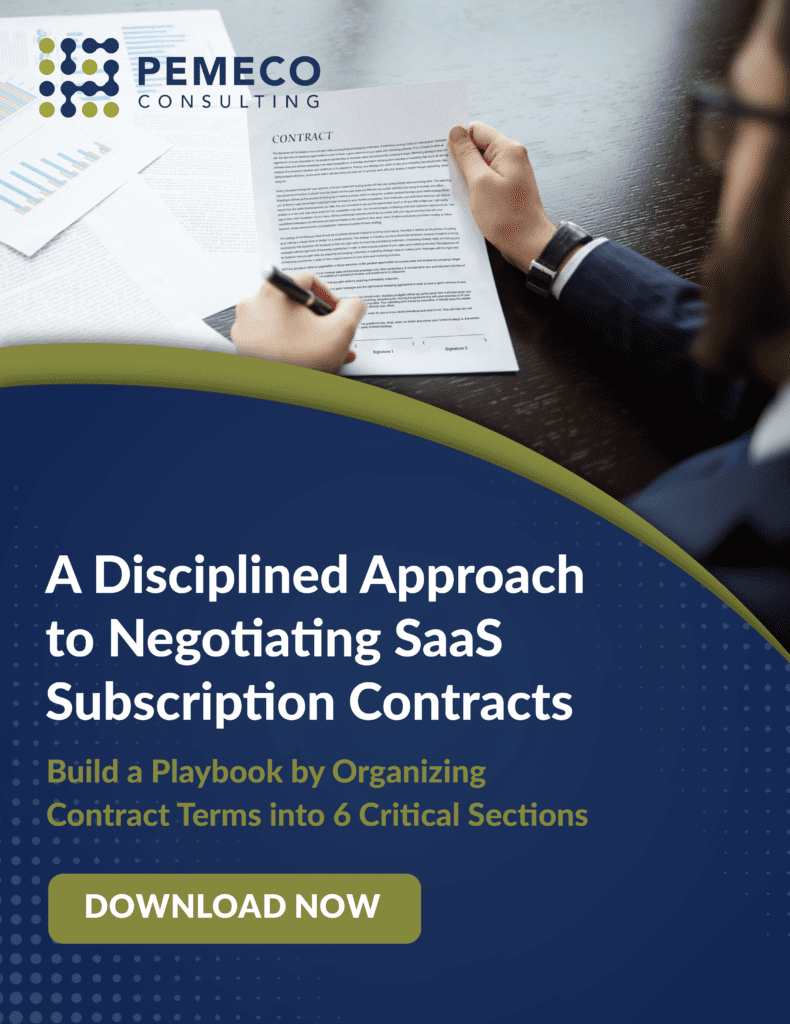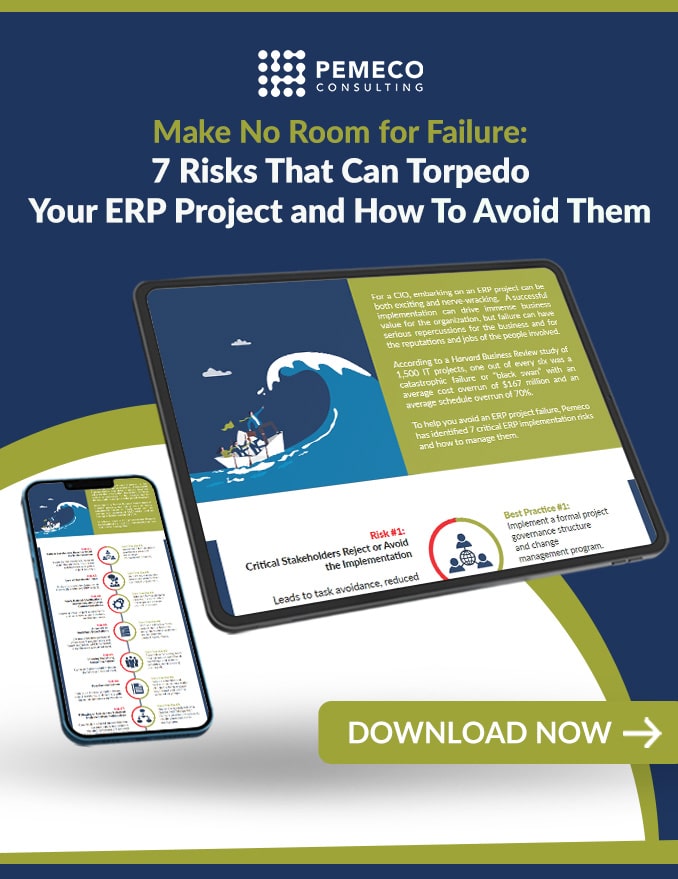Amid all the technical design and project planning that goes into an ERP implementation, one very important fact is often overlooked: organizations are made up of human beings whose natural fears, preferences, aspirations, and ingrained habits can often emerge as barriers to success.
Organizational change management is designed to mitigate the kinds of problems that arise from the human element in an ERP implementation, but only if it receives the investment in time and resources that it deserves.
According to change management experts Prosci, projects with excellent change management programs are 93% more likely to meet or exceed objectives. Why then do so many leaders shortchange this aspect of an ERP initiative? Moreover, what can be done to ensure that change management gets the attention it needs to contribute to project success?
Before we delve into those questions, let’s start with some observations about the human dynamics of ERP implementations.
The Emotional Curve of ERP Projects
Like so many other change initiatives, an ERP rollout typically evokes a range of emotions among stakeholders. As a project unfolds, we often see a common pattern wherein stakeholders move from initial resistance to hopeful expectation, then to frustration before finally breaking through to success.
At Pemeco, we call this the “emotional curve of ERP projects:”
Stage 1: Resistance. Initially, project advocates express hopeful expectation, but some throughout the organization will express doubts or outright resistance to the idea of meaningful change. This is usually driven by concerns about job security and a desire for workers and managers alike to “protect their turf” by preserving the status quo.
Stage 2: Euphoria. As system planning and configuration proceed, stakeholders begin to understand the potential benefits of the change. They see how new technology might eliminate some of the tedium from their jobs, how the new system might improve reporting, or how it can increase the pace of the business. They get a glimpse of what will be possible with the new ERP system.

Stage 3: Desperation. Go-live is typically a stressful, high-stakes moment. Despite a great deal of preparation, many people remain unprepared for the sheer volume of changes that impact their day-to-day operations. In the days and weeks following go-live, business users frequently express a desire to have their old systems back. As clunky and time-consuming as some of those legacy processes might have been, they were at least familiar, and on some level, they got the job done.
Stage 4: Recovery. As people throughout the organization become more familiar with the new ERP software, things finally begin to fall into place. The project team has ironed out the wrinkles in the new system, and business users have gotten past the steepest part of the learning curve. Stakeholders begin to reap the benefits of the newer technology, and look forward optimistically to the next project.
ERP Project Governance and Team Dynamics
One reason this “emotional curve” model can be so useful is that it helps project sponsors and team leaders to understand and acknowledge the vitally important role that organizational change management plays in any ERP implementation project.
The goal of organizational change management is to flatten the emotional curve of ERP projects as much as possible, paving the way for a faster, smoother, more successful implementation. This concept is not new, of course, but it frequently gets short shrift because so many people view it as simply a “nice-to-have.”
That line of thinking usually leads to a disjointed approach, in which change management (CM) and project management (PM) operate as functional silos, with relatively little communication or coordination between the two.
That’s not a recipe for success, though.
Pemeco Senior Consultant Catherine Franssens echoes this point: “It’s essential,” she says, “that the change manager be joined at the hip with the project manager. Those two people need to be in close communication on a daily basis.”
ERP Program Governance
Successful ERP implementation projects are built on a strong governance framework that incorporates that integrated approach:
The Steering Committee typically consists of C-level executives, including a project champion who directly oversees the Project Manager and the Change Manager. In addition to defining the strategic imperatives behind the ERP rollout, this group must take an active role in clearing roadblocks and managing resistance throughout the organization. The executive project champion, in particular, must take an active role in change management.
The Office of Project Management includes both the Project Manager and the Change Manager, as well as the lead Solution Architect. Core team members report directly to these leaders, and key leaders throughout the organization will interact frequently with the Office of Project Management.
The Change Manager is responsible for designing and implementing a structured methodology to lead change activities, so communication and training generally fall under their purview. The best candidates for this role will blend strong people skills with an ability to bring structure and discipline to the overall ERP implementation process.
What Makes for a Good Change Management Plan?
Just as the Project Manager outlines the scope and tactical approach in a project plan, the Change Manager should deliver a comprehensive change management plan. This document centers around communication and training, incorporating risk management, skills gap analysis, and other factors that support the overall mission of the CM function.
The change management plan should define a proactive strategy and timeline for communication with specific stakeholders and stakeholder groups, including external parties such as customers and vendors. It should also lay out the path to training stakeholders for the transition, managing expectations and paving the way for a smooth changeover from the old to the new.
The change management plan should be a dynamic, living document, sized for the needs of the organization. In other words, it should serve as a practical, real-world support to the success of the ERP implementation, accessible to stakeholders and easily consumable.
Are you interested in learning more about organizational change management in ERP implementations? Check out Pemeco’s free on-demand webinar, A Hands-On Approach to Managing Organizational Change During ERP Implementation.





